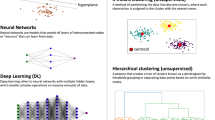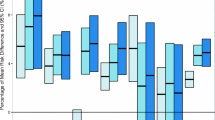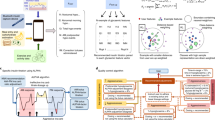Abstract
Purpose of Review
Machine learning (ML) is increasingly being studied for the screening, diagnosis, and management of diabetes and its complications. Although various models of ML have been developed, most have not led to practical solutions for real-world problems. There has been a disconnect between ML developers, regulatory bodies, health services researchers, clinicians, and patients in their efforts. Our aim is to review the current status of ML in various aspects of diabetes care and identify key challenges that must be overcome to leverage ML to its full potential.
Recent Findings
ML has led to impressive progress in development of automated insulin delivery systems and diabetic retinopathy screening tools. Compared with these, use of ML in other aspects of diabetes is still at an early stage. The Food & Drug Administration (FDA) is adopting some innovative models to help bring technologies to the market in an expeditious and safe manner.
Summary
ML has great potential in managing diabetes and the future is in furthering the partnership of regulatory bodies with health service researchers, clinicians, developers, and patients to improve the outcomes of populations and individual patients with diabetes.
Similar content being viewed by others
References
Papers of particular interest, published recently, have been highlighted as: • Of importance •• Of major importance
Mehta N, Devarakonda MV. Machine learning, natural language programming, and electronic health records: the next step in the artificial intelligence journey? J Allergy Clin Immunol [Internet]. [cited 2018 Mar 9]; Available from: https://www.sciencedirect.com/science/article/pii/S0091674918303178
Wang S, Summers RM. Machine learning and radiology. Med Image Anal. 2012;16:933–51.
Janowczyk A, Madabhushi A. Deep learning for digital pathology image analysis: a comprehensive tutorial with selected use cases. J Pathol Inform. 2016;7:29.
Esteva A, Kuprel B, Novoa RA, Ko J, Swetter SM, Blau HM, et al. Dermatologist-level classification of skin cancer with deep neural networks. Nature. 2017;542:115–8.
Castro JL, Mantas CJ, Benítez JM. of Fuzzy Rules.
Smith JW, Everhart JE, Dickson WC, Knowler WC, Johannes RS. Using the ADAP learning algorithm to forecast the onset of diabetes mellitus. Proc Annu Symp Comput Appl Med Care. 1988:261–5.
Brown N, Critchley J, Bogowicz P, Mayige M, Unwin N. Risk scores based on self-reported or available clinical data to detect undiagnosed type 2 diabetes: a systematic review. Diabetes Res Clin Pract. 2012;98:369–85.
Habibi S, Ahmadi M, Alizadeh S. Type 2 diabetes mellitus screening and risk factors using decision tree: results of data mining. Glob J Health Sci. 2015;7:p304.
Han L, Luo S, Yu J, Pan L, Chen S. Rule extraction from support vector machines using ensemble learning approach: an application for diagnosis of diabetes. IEEE J Biomed Health Inform. 2015;19:728–34.
Mansourypoor F, Asadi S. Development of a reinforcement learning-based evolutionary fuzzy rule-based system for diabetes diagnosis. Comput Biol Med. 2017;91:337–52.
Everett E, Kane B, Yoo A, Dobs A, Mathioudakis N. A novel approach for fully automated, personalized health coaching for adults with prediabetes: pilot clinical trial. J Med Internet Res [Internet]. 2018 [cited 2019 Sep 15];20. Available from: https://www.ncbi.nlm.nih.gov/pmc/articles/PMC5849796/
• El-Khatib FH, Balliro C, Hillard MA, Magyar KL, Ekhlaspour L, Sinha M, et al. Home use of a bihormonal bionic pancreas versus insulin pump therapy in adults with type 1 diabetes: a multicentre randomised crossover trial. Lancet Lond Engl. 2017;389:369–80 Findings from this study serve the role of introducing and validating the use of a bihormonal insulin delivery therapy compared with insulin pump therapy in patients with type 1 diabetes.
Lewis D. How I designed a “DIY” closed loop artificial pancreas [Internet]. DIYPS.org. 2016 [cited 2019 Sep 15]. Available from: https://diyps.org/2016/05/12/how-i-designed-a-diy-closed-loop-artificial-pancreas/
Lewis DM, Swain RS, Donner TW. Improvements in A1C and time-in-range in DIY closed-loop (OpenAPS) users. Diabetes. 2018;67:352-OR.
FDA. FDA permits marketing of artificial intelligence-based device to detect certain diabetes-related eye problems [Internet]. FDA. 2019 [cited 2019 Sep 29]. Available from: http://www.fda.gov/news-events/press-announcements/fda-permits-marketing-artificial-intelligence-based-device-detect-certain-diabetes-related-eye
OpenAPS outcomes – OpenAPS.org [Internet]. [cited 2019 Oct 6]. Available from: https://openaps.org/outcomes/
FDA. FDA approves first automated insulin delivery device for type 1 diabetes [Internet]. FDA. 2019 [cited 2019 Oct 6]. Available from: http://www.fda.gov/news-events/press-announcements/fda-approves-first-automated-insulin-delivery-device-type-1-diabetes
Health C for D and R. Digital Health [Internet]. FDA. 2019 [cited 2019 Oct 6]. Available from: http://www.fda.gov/medical-devices/digital-health
Beta Bionics | Introducing the iLet [Internet]. betabionics. [cited 2019 Oct 6]. Available from: https://www.betabionics.com
Microsoft joins Open Invention Network to help protect Linux and open source [Internet]. [cited 2019 Oct 6]. Available from: https://azure.microsoft.com/en-us/blog/microsoft-joins-open-invention-network-to-help-protect-linux-and-open-source/
•• DSW T, Cheung CY-L, Lim G, GSW T, Quang ND, Gan A, et al. Development and validation of a deep learning system for diabetic retinopathy and related eye diseases using retinal images from multiethnic populations with diabetes. JAMA. 2017;318:2211–23 Findings from this study provide a framework for how we can utilize a validated deep learning system to diagnose diabetic retinopathy and related eye diseases. It is a good example of a ML study done with clinician input and of good practical significance.
• Zeevi D, Korem T, Zmora N, Israeli D, Rothschild D, Weinberger A, et al. Personalized nutrition by prediction of glycemic responses. Cell. 2015;163:1079–94 Findings from this study provide an approach to individualizing lifestyle interventions utilizing AI and ML to improve glycemic profiles. Their approach is one that can be replicated and is generalizable for use in the future.
Contreras I, Vehi J. Artificial intelligence for diabetes management and decision support: literature review. J Med Internet Res. 2018;20:e10775.
Finkelstein EA, Haaland BA, Bilger M, Sahasranaman A, Sloan RA, Nang EEK, et al. Effectiveness of activity trackers with and without incentives to increase physical activity (TRIPPA): a randomised controlled trial. Lancet Diabetes Endocrinol. 2016;4:983–95.
Author information
Authors and Affiliations
Corresponding author
Ethics declarations
Conflict of Interest
The authors declare that they have no conflict of interest.
Human and Animal Rights and Informed Consent
This article does not contain any studies with human or animal subjects performed by any of the authors.
Additional information
Publisher’s Note
Springer Nature remains neutral with regard to jurisdictional claims in published maps and institutional affiliations.
This article is part of the Topical Collection on Economics and Policy in Diabetes
Rights and permissions
About this article
Cite this article
Broome, D.T., Hilton, C.B. & Mehta, N. Policy Implications of Artificial Intelligence and Machine Learning in Diabetes Management. Curr Diab Rep 20, 5 (2020). https://doi.org/10.1007/s11892-020-1287-2
Published:
DOI: https://doi.org/10.1007/s11892-020-1287-2




